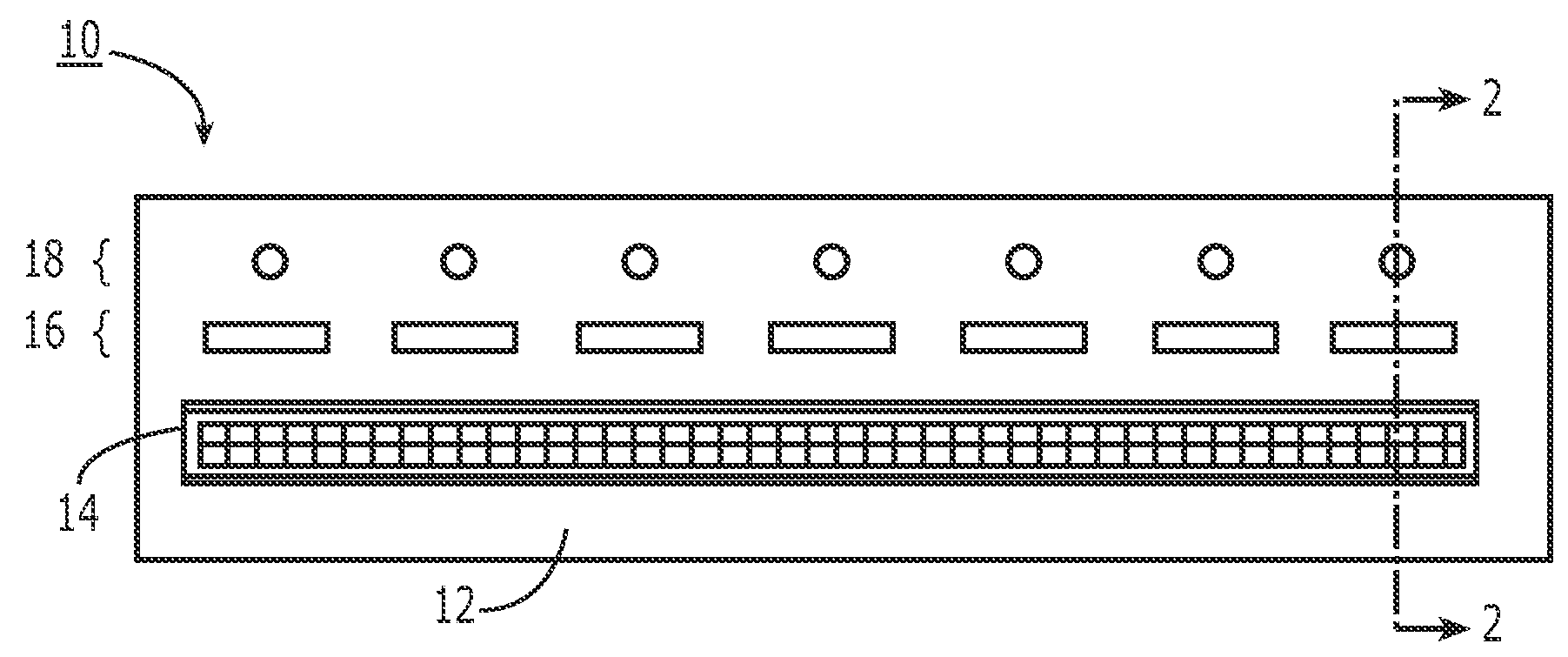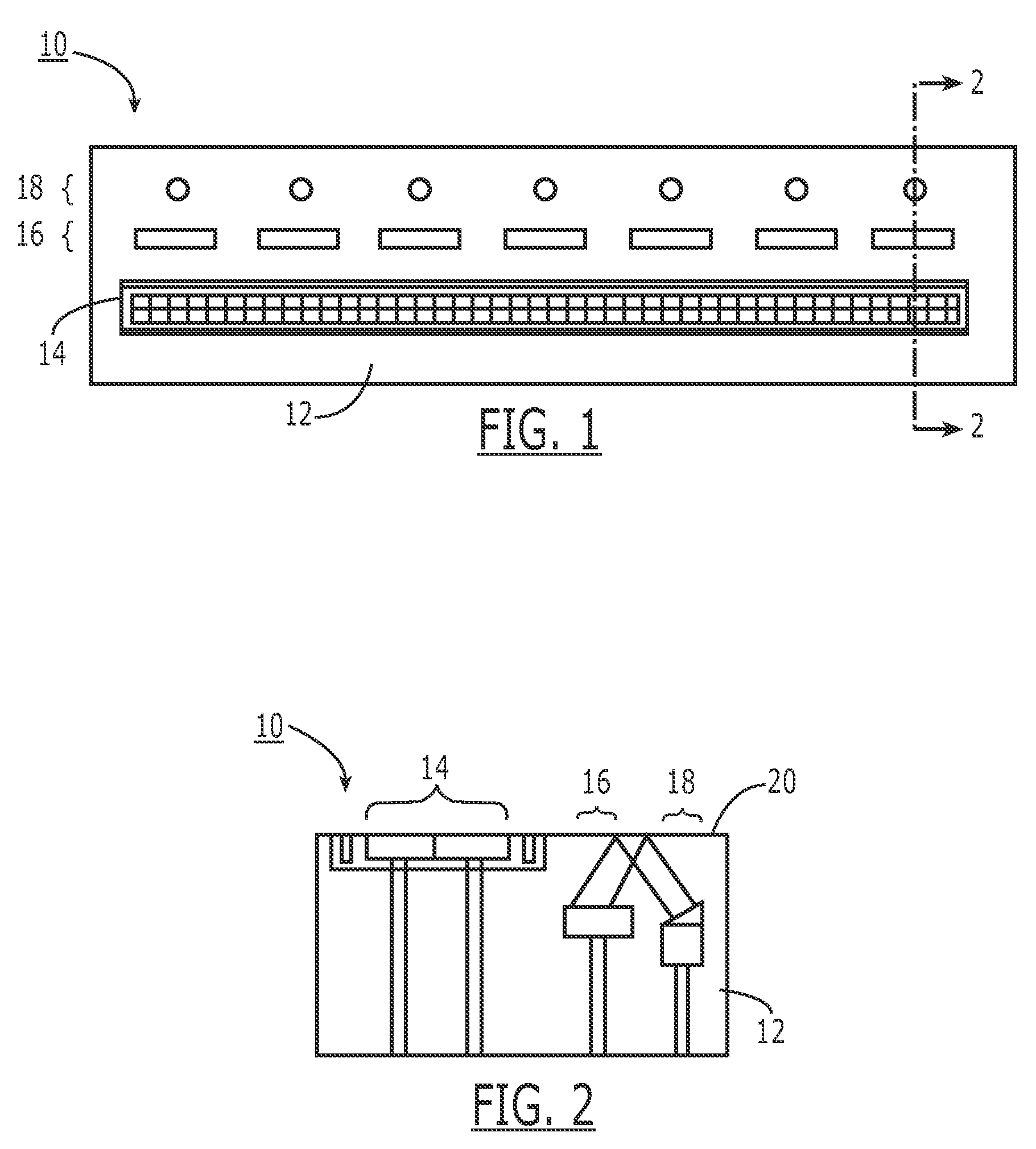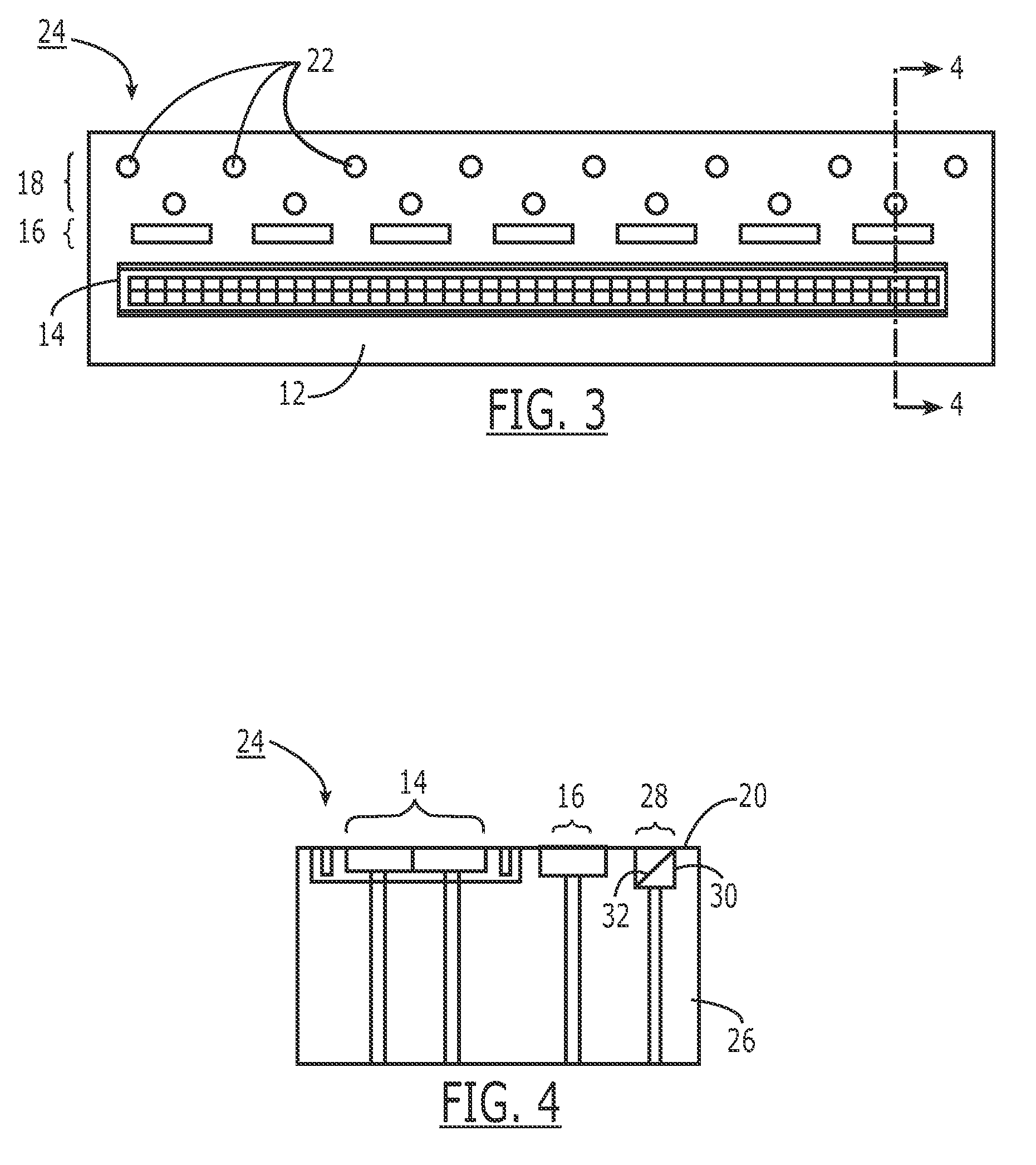Hybrid multi-sensor biometric identification device
a biometric identification and multi-sensor technology, applied in the field of hybrid multi-sensor biometric identification devices, can solve the problems of overcoming the use of replicated prints to defeat the security of biometric identification systems, and the effect of increasing marketing
- Summary
- Abstract
- Description
- Claims
- Application Information
AI Technical Summary
Benefits of technology
Problems solved by technology
Method used
Image
Examples
Embodiment Construction
[0029]With reference to FIG. 1, a first embodiment 10 of a hybrid multi-sensor biometric identification device according to the present invention is illustrated. FIG. 1 is a top view of the device consisting of: a unitary body structure 12 having disposed therein an electrical sensor array 14, an optical sensor array 16, and a light source array 18, each described in further detail below. While the embodiment shown in FIG. 1 illustrates the basic principles of the invention, the specific arrangement of devices (e.g., relative placement, number of elements, etc.) is not critical to the broad concept of a hybrid electrical / optical fingerprint sensor according to the present invention.
[0030]According to one embodiment, body structure 12 will typically be a plastic, phenolic, acrylic, glass, or similar material providing mechanical support and protection for various elements placed or formed therein. The material may be fully or partially transmissive or opaque, depending on the arrange...
PUM
 Login to View More
Login to View More Abstract
Description
Claims
Application Information
 Login to View More
Login to View More - R&D
- Intellectual Property
- Life Sciences
- Materials
- Tech Scout
- Unparalleled Data Quality
- Higher Quality Content
- 60% Fewer Hallucinations
Browse by: Latest US Patents, China's latest patents, Technical Efficacy Thesaurus, Application Domain, Technology Topic, Popular Technical Reports.
© 2025 PatSnap. All rights reserved.Legal|Privacy policy|Modern Slavery Act Transparency Statement|Sitemap|About US| Contact US: help@patsnap.com



